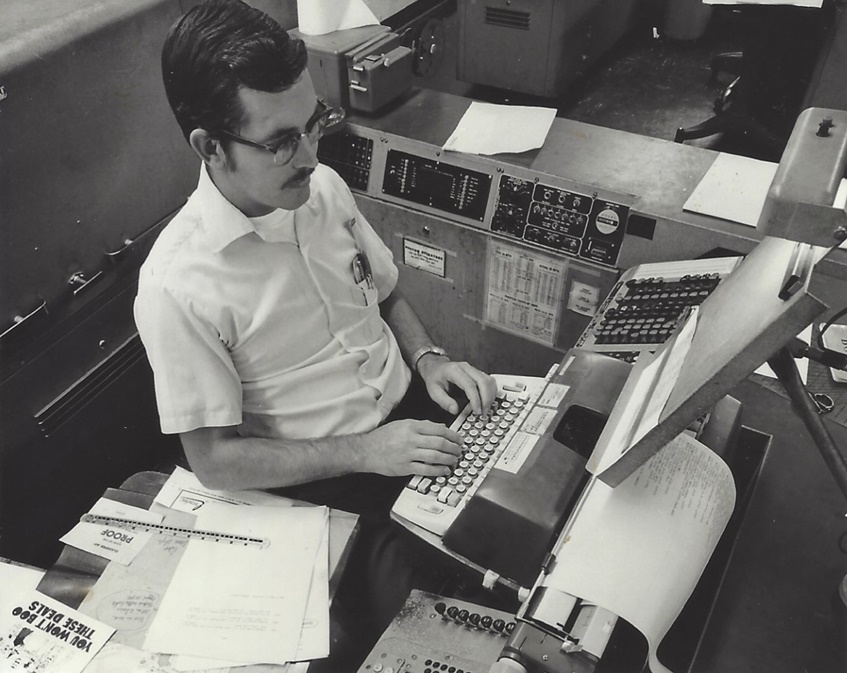Journalists in the U.S., Canada, and Europe (and not long after, the rest of the planet) helped to pioneer what would eventually result in our mobile world, and did so by experimenting with early modems and the first generation of “laptops” the 1980s. The origin of mobile media work helps us understand how all workers gradually did more of their work on the go during the late 20th and early 21st centuries.
Already Mobile
The development of mobile computing for the larger public is often described as a movement in which devices move from “desks to laps, palms, and hips,” a movement that happened in the late 1980s. But news workers deviated from that trajectory as their work was, in a sense, always mobile — they worked remotely even before the advent of computers, with the help of earlier technologies such as telephones and radio cars.
The first generation of newsroom computers actually arrived in the 1960s, at the height of the Cold War. These machines were often so-called minicomputers, like the closet-sized PDP-8 from Digital Equipment Corporation, and handled duties such as pagination (how to get the printed version of a newspaper to handle text over multiple pages) or early layout tasks. While there were mainframe computers in a handful of major newspapers and TV networks’ headquarters as early as the 1950s, minicomputers were the first generation of more commonly utilized newsroom computers. In time, minicomputers running small newsroom networks through local area networks (LANs) became common in the United States, Canada, and the United Kingdom, where they ran the computing resources shared by reporters and editors at “dumb” video-display terminals (VDT).

Starting in the mid-1970s and the early 1980s, “micro” or “personal” computers became more common in newsrooms. These small, powerful (for their era) machines functioned as self-contained desktops. While still connected to newsroom LANs, they allowed news workers direct access to databases and more powerful word-processing, number-crunching, and other programs, including early mapping software. Computers were also sources of key changes in the more technical aspects of news making and rapidly played a role in additional advancements in copy editing, layout, and pagination, all of which paved the way for the development of the first generation of content-management systems (CMS).
